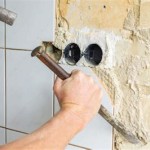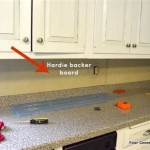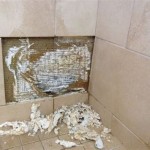Can You Lay Vinyl Plank Flooring Over Ceramic Tile? A Comprehensive Guide
The prospect of updating flooring can be daunting, often involving extensive demolition, subfloor preparation, and significant time investment. For homeowners looking for a less invasive and more cost-effective solution, laying vinyl plank flooring over existing ceramic tile presents an appealing option. This article explores the feasibility of this approach, outlining the necessary preparations, potential challenges, and key considerations to ensure a successful and aesthetically pleasing outcome. Understanding the nuances involved is crucial for determining whether this method is appropriate for a specific situation and achieving long-lasting results.
Vinyl plank flooring, often lauded for its durability, water resistance, and ease of installation, has become a popular choice for various rooms in the home. Its versatility allows it to mimic the look of hardwood, stone, or other materials, offering a wide range of design possibilities. When considering laying it over ceramic tile, however, certain factors must be carefully evaluated to avoid future problems such as uneven surfaces, adhesive failure, or telegraphing of the tile grout lines.
Key Point 1: Assessing the Existing Ceramic Tile
The initial step in determining the viability of installing vinyl plank flooring over ceramic tile involves a thorough assessment of the existing tile's condition. Several factors contribute to this evaluation, including the tile's stability, flatness, and overall integrity. Any issues present in the existing tile will invariably affect the performance and appearance of the vinyl plank flooring installed on top.
Firstly, the tile must be firmly adhered to the subfloor. Loose or cracked tiles need to be addressed before proceeding. Loose tiles should be removed and the resulting voids filled with a cement-based patching compound, ensuring a level and stable base. Cracked tiles, if not structurally compromised, can be repaired using epoxy fillers. However, extensively damaged tiles are best removed and replaced to prevent future movement or instability.
Secondly, the flatness of the tile surface is paramount. Vinyl plank flooring requires a relatively smooth and even substrate to prevent uneven wear, buckling, or separation of the planks. Significant variations in height between tiles, or lippage, can create noticeable imperfections in the finished floor. A long, straight edge, such as a level or ruler, can be used to check for unevenness across the tile surface. Any dips or rises greater than the manufacturer's recommended tolerance (typically around 3/16 inch over a 10-foot span) will need to be corrected.
Thirdly, the type of ceramic tile plays a role. Highly textured or heavily patterned tiles may require more extensive preparation to ensure a smooth surface for the vinyl planks. Deep grout lines, in particular, can telegraph through thinner vinyl planks, creating an undesirable visual effect. This is usually combatted using leveling compounds.
If the existing ceramic tile is deemed unsuitable due to extensive damage, extreme unevenness, or significant instability, it is generally advisable to remove the tile and prepare a new subfloor. While more labor-intensive, this approach offers a higher degree of certainty in terms of long-term performance and aesthetics.
Key Point 2: Preparing the Tile Surface for Vinyl Plank Installation
Assuming the existing ceramic tile is deemed to be in acceptable condition, the next crucial step is to prepare the surface to ensure proper adhesion and a smooth, level substrate for the vinyl plank flooring. This preparation typically involves cleaning, leveling, and potentially priming the tile surface.
Thorough cleaning is essential to remove any dirt, grime, wax, or other contaminants that could interfere with the adhesion of the vinyl plank flooring. The tile should be scrubbed with a strong alkaline cleaner and rinsed thoroughly with clean water. Allowing the surface to dry completely before proceeding is crucial to ensure optimal bonding.
Leveling the tile surface is often necessary to minimize the appearance of grout lines and to create a smooth, even substrate. This is typically accomplished using a self-leveling underlayment, a cement-based compound that flows easily and hardens to create a flat, uniform surface. The self-leveling underlayment should be applied according to the manufacturer's instructions, ensuring adequate coverage and feathering the edges to blend seamlessly with the existing tile surface. Multiple coats may be required to achieve the desired level of smoothness.
In some cases, a primer specifically designed for use with vinyl plank flooring may be recommended. Primers can improve adhesion, reduce porosity, and prevent moisture migration. The manufacturer's recommendations regarding primer selection and application should be carefully followed.
Consider the type of vinyl plank being installed. Click-lock vinyl may be more forgiving than glue-down options. Glue-down vinyl requires a more meticulously prepared surface to ensure adhesion and prevent movement. Floating vinyl plank flooring with a click-lock mechanism may tolerate minor imperfections in the tile surface, but proper preparation is still crucial for optimal performance. This type of flooring typically allows a small degree of movement and flexibility, making it an advantage in scenarios where the existing tile might have slight imperfections.
Key Point 3: Considerations for Grout Lines and Plank Thickness
Grout lines present a particular challenge when laying vinyl plank flooring over ceramic tile. These recessed lines can telegraph through the vinyl planks, creating an undesirable visual effect if not addressed properly. The thickness of the vinyl plank flooring plays a significant role in minimizing this issue.
Thicker vinyl planks are generally more effective at concealing grout lines than thinner planks. Planks with a thickness of 5mm or greater are often recommended for installations over ceramic tile. These thicker planks provide more rigidity and are less likely to conform to the contours of the grout lines. However, thicker planks may also increase the overall floor height, which could pose problems with doorways or transitions to adjacent rooms. Consider door thresholds and other height-sensitive areas.
As discussed earlier, leveling the tile surface with a self-leveling underlayment is the most effective way to minimize the telegraphing of grout lines. This creates a smooth, uniform substrate that prevents the vinyl planks from conforming to the recessed lines. The application of a leveling compound might also require slight adjustments to doorframes and baseboards to accommodate the new floor height.
The type of adhesive used for glue-down vinyl plank flooring can also influence the visibility of grout lines. Some adhesives are more flexible and forgiving than others. Consulting with a flooring professional or manufacturer's representative can help in selecting an appropriate adhesive for the specific application. For floating floors, an underlayment is generally used which provides cushioning and helps to minimize the appearance of grout lines. Choose an underlayment that is appropriate for the thickness of the grout lines and the subfloor material.
Furthermore, the pattern and texture of the vinyl plank flooring can also help to disguise grout lines. Planks with a textured surface or a busy, non-repeating pattern are more likely to camouflage any subtle imperfections in the substrate. Using a visual barrier as part of the flooring style will drastically reduce the appearance of imperfections in the existing tile.
In summary, while laying vinyl plank flooring over ceramic tile can be a viable option, careful assessment of the existing tile, thorough preparation of the surface, and consideration of plank thickness and grout lines are critical for achieving a successful and aesthetically pleasing outcome. Failing to address these factors can lead to problems such as uneven surfaces, adhesive failure, and telegraphing of the tile grout lines, ultimately compromising the longevity and appearance of the new floor.

New Vinyl Plank Flooring Over Tile Table And Hearth

New Vinyl Plank Flooring Over Tile Table And Hearth

New Vinyl Plank Flooring Over Tile Table And Hearth

Should You Install Vinyl Floor Over Tile

What Type Of Flooring Can You Install Over Ceramic Tile

Can You Put Vinyl Plank Flooring Over Ceramic Tile Floors Blvd

Can Vinyl Flooring Be Laid Over Tiles Ox

New Vinyl Plank Flooring Over Tile Table And Hearth

New Vinyl Plank Flooring Over Tile Table And Hearth

Vinyl Plank Wood Directly Over Tile
Related Posts








